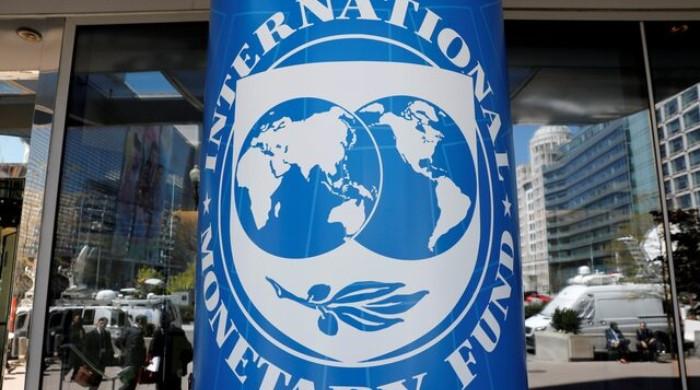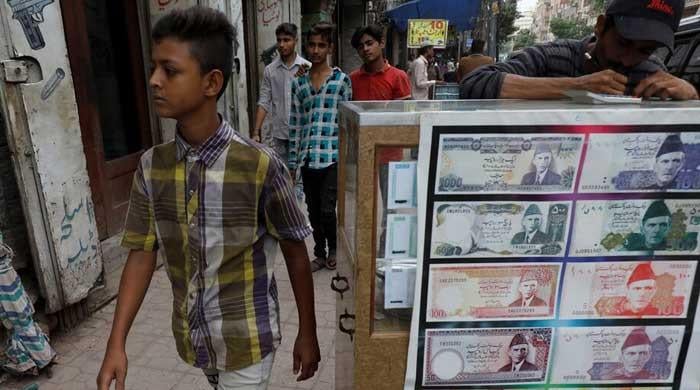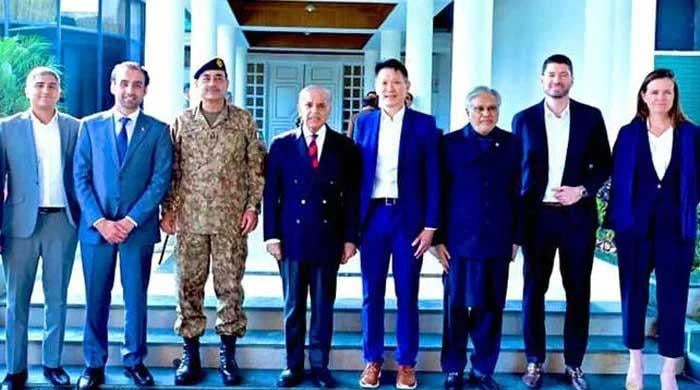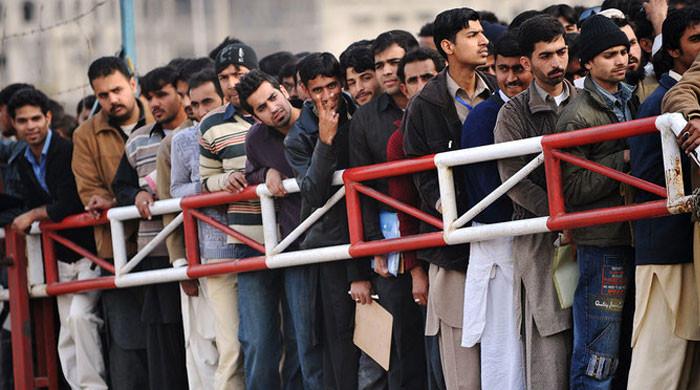The rise and retreat of TLP
In 2024 national elections, TLP finished as fourth-largest party, receiving 2.88 million votes
November 01, 2025
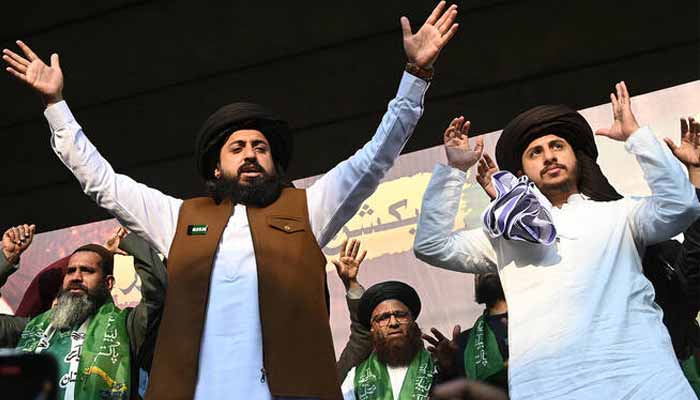
The recent fall from grace of the Tehreek-e-Labaik Pakistan (TLP) is as dramatic as was its rise. Led by firebrand cleric Khadim Hussain Rizvi, who passed away in 2020, the party rose to prominence in 2017 on the back of one of the most highly sensitive religious issues in the country.
Twice in three years — in 2017 and later in 2020 — the TLP demonstrated its capability to throw life in the twin cities of Rawalpindi and Islamabad into a tailspin. On both occasions, the party forced the government to strike a deal on the former’s terms.
The TLP’s third attempt to bring the government to its knees failed and the party was banned in April 2021 under the Anti-Terrorism Act, 1997. The ban, however, was lifted in November. Let’s hope the ban will not be lifted this time.
As in the case of most other religio-political leaders in Pakistan, Rizvi had dominated his organisation completely. In keeping with the prevailing political norms, he was succeeded by his son, who made sure that the party remained a cut above the rest in whipping up its followers’ sentiments to the point of frenzy. However, more important than the TLP is the narrative that it espoused, which is likely to remain viable.
Seen in a broader context, the rise of the TLP was part of the ascendency of right-wing parties, which has been the seminal political development on the national scene in recent years.
Our right-wing parties can be classified into two categories. One category comprises religio-political outfits, such as the two factions of the Jamiat Ulema-e-Islam (JUI), the Jamiat Ulema-e-Pakistan (JUP) and the Jammat-e-Islami (JI). The TLP, like the JUP, represented the Barelvi sub-sect, the largest Muslim sub-sect in Pakistan.
The party got its inspiration from the execution of Mumtaz Qadri, who had killed Punjab governor Salmaan Taseer in 2011. In the eyes of a considerable section of society, even a soft criticism of a particular law constitutes an unpardonable act.
The TLP’s Rawalpindi-Islamabad dharna in November 2017, which catapulted it to fame, was also precipitated, on the face of it, by an inadvertent mistake in a parliamentary oath. The error was subsequently rectified, and there was no indication that it was made intentionally. But it provided the TLP with enough ammunition to go after those seen as responsible for the error.
The religious parties, regardless of which sub-sect they represent, are strong exponents of subordinating politics to religion, itch for using state machinery to make people ‘good’ Muslims, as per their interpretation, and punish those who do not measure up to their standards.
The other right-wing category comprises mainstream conservative political parties, such as the PML-N and the PTI. Unlike religious parties, their support is broad-based and is not confined to a particular creed or sect. But they do appeal to the religious vote-bank as well as strike electoral alliances with religious outfits.
These parties play upon religious sentiments when it is to their advantage. The PML-N has sought to reposition itself as the party of the centre-right in recent years. Former prime minister Nawaz Sharif, before he was unseated, on quite a few occasions declared that he represented all citizens and not just Muslims, for which he was roundly criticised by the clergy.
In its inaugural general elections in 2018, the TLP fielded 571 candidates, including 178 for the National Assembly. Although it secured only two provincial assembly seats – significantly enough, both in Karachi — the party emerged as the fifth largest party nationwide with 2.2 million votes, accounting for 4.2% of the total votes cast, narrowly behind the relatively moderate clergy alliance MMA’s 2.56 million votes. In Punjab and the two biggest cities each, the TLP finished third in terms of votes obtained.
In the 2024 national elections, the TLP finished as the fourth largest party, receiving 2.88 million votes or 4.89% of the total votes, but failed to win a single seat. In the Punjab Assembly, the TLP returned as the third largest party, bagging about 2.9 million votes, but could win only one seat.
Political parties grow out of the cleavages present in a society. Typically, these include political ideology, creed, ethnicity, location, caste or race and social class. The relative importance of these divisions across societies as well as within a society over time depends primarily on social ethos.
In Pakistan, a multiethnic, multi-faith society, creed (religion or sect) and ethnicity have constituted far more significant cleavages than the social class. This explains why society, despite acute and growing economic injustices, has not yet seen the rise of a workers’ party. Cleavage consciousness is thus a fundamental condition for the rise of a political party.
Cleavage consciousness has been at work in the case of the rise of the TLP as well. Barelvi political parties, such as the JUP, have contested national elections since 1970.
The electoral appeal of these relatively moderate parties remained largely confined to urban Sindh, notably Karachi. Other sects or sub-sects have also had their political parties. Over the years, the electorate has not been much impressed with religious parties and overwhelmingly voted for the mainstream political parties — an unmistakable sign of the essentially secular outlook of the electorate.
The rise of the MQM in the mid-1980s strengthened the ethnic cleavage in urban Sindh at the expense of religious parties. As a result, parties like the JUP were reduced to insignificance. In other parts of the country, the Barelvi vote bank was mainly captured by the PML-N.
Despite the presence of the Barelvi-Deobandi cleavage, an electorally viable political party could not be mobilised. The efforts of Allama Tahirul Qadri, a renowned Barelvi scholar who founded the Pakistani Awami Tehreek, to make a niche for himself in electoral politics also came to grief. Disillusioned with the electorate, he reposed his faith in agitation politics, where he cut a sorry figure as well.
Both the execution of Mumtaz Qadri and the promulgation of the Election Act, 2017, which catapulted the TLP into popular politics, took place when the PML-N, Barelvis’ first electoral choice, was in the saddle. The TLP’s rise was also aided by the changing political ethos under which politics has become largely a squalid affair in which demonising rivals, showing zero tolerance for dissent and the ability to command mindless submission from supporters have come to be prized as the foremost virtues of a leader. The TLP, like the PTI, made adroit use of social media, where the audience is remarkably impressionable and can be conveniently beguiled with myth-spinning.
Unlike most of the mainstream parties, the TLP’s leadership was drawn from the lower-middle and bottom of the economic heap. The combination of religion and economics could have proved formidable had the party refrained from violence.
For whatever reason, the rise of far-right politics is a matter of grave concern because mixing religion and politics is a dangerous game for a multi-creed polity like Pakistan. Political manipulation of religion is a kiss of death for such societies.
The writer is an Islamabad-based columnist. He tweets/posts @hussainhzaidi and can be reached at: [email protected]
Disclaimer: The viewpoints expressed in this piece are the writer's own and don't necessarily reflect Geo.tv's editorial policy.
Originally published in The News





